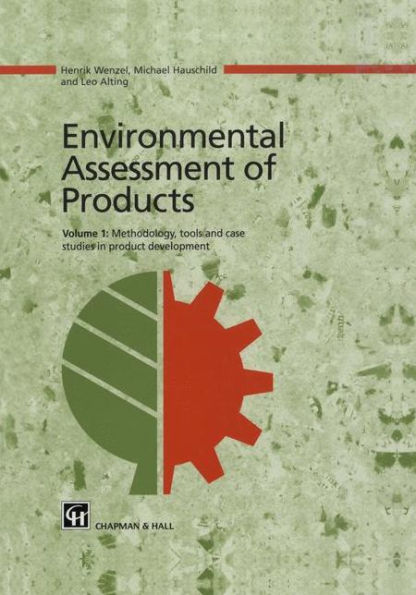Environmental Assessment of Products: Volume 1 Methodology, Tools and Case Studies in Product Development
The aim of this book is to support industry in their effort to design environmentally friendly products. The book comprises a method and a manual for life cycle assessment of products and it includes examples of how industrial companies have used the method succesfully in the design of more environmentally friendly products. The method has been developed over a period of four years under the Danish EDIP programme (Environmental Design of Industrial Products) by a team representing the Technical University of Denmark, five Danish industrial companies, the Confederation of Danish Industries and the Dan ish Environmental Protection Agency. The method is coheherent and operational and it is well documented by a large variety of examples including five different complex electromechanical products. It guides the user through the inventory and assessment of environmental impacts of products and shows how various products and design solutions during product development can be compared. The method is supported by a base of data for the assessments of environmental impacts and is thus designed as a tool which will make it possible for the user to start on life cycle assessment at once. The book also guides the user through the identification of environmental improvement potentials in the product and the setting of environmental specifications with in the general concept of overall commercial optimization. The partnership between industry, authorities and university has been highly fruitful.
1117304453
Environmental Assessment of Products: Volume 1 Methodology, Tools and Case Studies in Product Development
The aim of this book is to support industry in their effort to design environmentally friendly products. The book comprises a method and a manual for life cycle assessment of products and it includes examples of how industrial companies have used the method succesfully in the design of more environmentally friendly products. The method has been developed over a period of four years under the Danish EDIP programme (Environmental Design of Industrial Products) by a team representing the Technical University of Denmark, five Danish industrial companies, the Confederation of Danish Industries and the Dan ish Environmental Protection Agency. The method is coheherent and operational and it is well documented by a large variety of examples including five different complex electromechanical products. It guides the user through the inventory and assessment of environmental impacts of products and shows how various products and design solutions during product development can be compared. The method is supported by a base of data for the assessments of environmental impacts and is thus designed as a tool which will make it possible for the user to start on life cycle assessment at once. The book also guides the user through the identification of environmental improvement potentials in the product and the setting of environmental specifications with in the general concept of overall commercial optimization. The partnership between industry, authorities and university has been highly fruitful.
299.99
In Stock
5
1

Environmental Assessment of Products: Volume 1 Methodology, Tools and Case Studies in Product Development
543
Environmental Assessment of Products: Volume 1 Methodology, Tools and Case Studies in Product Development
543
299.99
In Stock

Product Details
| ISBN-13: | 9780412808005 |
|---|---|
| Publisher: | Springer US |
| Publication date: | 09/30/1997 |
| Series: | Environmental Assessment of Products Methodology , #1 |
| Edition description: | 1997 |
| Pages: | 543 |
| Product dimensions: | 7.01(w) x 10.00(h) x 0.05(d) |
From the B&N Reads Blog
